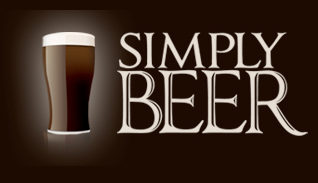Over the last seven years or so I have added a couple extra pounds, well more like a 30% increase; not good or healthy. At the beginning of June I started a weight loss plan on Weight Watchers® and have lost 10 lbs following their online program guide over the first 2 weeks. So far what I like about this program is that I can eat the foods I want, and at the same time see how good/bad that food is for my weight loss goals. With the Weight Watchers® Point® system or any other weight loss program, a big part of staying on track, with in your goals, is watching the amount of fat and calories you take in.
The good thing for us beer Connoisseurs, there is no fat in beer, but beer has a tremendous amount of calories. My problem when I was entering my food and drink intake on my weight loss plans’ online system, there was only light beer and regular beer. If I’m drinking a 12 oz glass of pilsner(4% ABV), it may only be 150 calories, but If I drink a 12 oz glass of Dogfish Head 120minute IPA (18% ABV at 45°plato), that would be over 600 calories. A huge caloric difference between the same serving size of beer. For my current plan, 1 Dogfish Head 120 minute IPA would be 34% of my daily allowance, where as the pilsner would only be 11%.
The problem I’ve been having and I’m sure many others have too, how many calories are in my beer? There are very few breweries that list calorie information on their websites, so you end up guessing. Since beer is a very simple drink, all the calories are from one place, the alcohol. If you know the ABV (alcohol by volume) you can roughly calculate the calories in beer. The color and clarity of a beer have nothing to do with the number of calories. It is exactly related to the amount of sugar in the “beer” when fermentation starts and how much is left over when you are done. The more sugar at the start will give you a higher ABV, but if there is unfermented sugar left over at the end (attenuation) the calorie range will fluctuate a bit. This is why I said roughly and why the chart below has a calorie range.
Alcohol by Volume (ABV) to Calories conversion chart*.
| ABV (%) |
Calories – Low End (dry) |
Calories – High End (sweet) |
| 1.0 | 64 | 90 |
| 1.5 | 75 | 101 |
| 2.0 | 85 | 113 |
| 2.5 | 100 | 126 |
| 3.0 | 113 | 139 |
| 3.5 | 126 | 151 |
| 4.0 | 139 | 164 |
| 4.5 | 151 | 176 |
| 5.0 | 163 | 191 |
| 5.5 | 176 | 203 |
| 6.0 | 189 | 216 |
| 6.5 | 201 | 228 |
| 7.0 | 213 | 239 |
| 7.5 | 226 | 253 |
| 8.0 | 239 | 264 |
| 8.5 | 251 | 276 |
| 9.0 | 263 | 290 |
| 9.5 | 276 | 303 |
| 10.0 | 290 | 315 |
| 10.5 | 302 | 327 |
| 11.0 | 314 | 341 |
| 11.5 | 327 | 352 |
| 12.0 | 339 | 364 |
| 12.5 | 351 | 378 |
| 13.0 | 365 | 390 |
| 13.5 | 375 | 402 |
| 14.0 | 389 | 414 |
| 14.5 | 401 | 427 |
| 15.0 | 413 | 440 |
| 15.5 | 426 | 452 |
| 16.0 | 438 | 464 |
| 16.5 | 450 | 476 |
| 17.0 | 463 | 488 |
| 17.5 | 475 | 500 |
| 18.0 | 489 | 513 |
| 18.5 | 499 | 525 |
| 19.0 | 513 | 537 |
| 19.5 | 524 | 551 |
| 20.0 | 538 | 562 |
| 20.5 | 548 | 574 |
| 21.0 | 562 | 586 |
| 21.5 | 573 | 599 |
| 22.0 | 585 | 611 |
* Chart is a rough estimation for a 12oz serving. For exact calories, Original Gravity and Final Gravity must be known. Low end assumes a final gravity of 1.010 and the high assumes a final gravity of 1.017. Some styles of beers may exceed the high end by a significant amount, such as a Russian Imperial Stouts or Sweet Stouts.
For my own personal use, I usually take the middle between the high and low. For a much sweeter beer, I would error on the high side of the scale. I use this chart to gauge how many calories I have consumed with the beer. If I know I have been “good” during the day I have higher ABV beers later, but if I haven’t I will either cut out beer (OUCH!) or have one that I know is lower in alcohol.

Recent Comments